We’ve tested tons of resources for learning Japanese to help you figure out which ones are worth using and which ones should be avoided. The best way to learn Japanese will very from person to person, based on learning styles and language goals. Hopefullt this list will help you narrow your search to find the right Japanese course for you. These are our top choices!
Popular Posts
MOST RECOMMENDED RESOURCES FOR LEARNING JAPANESE

Japanese Uncovered
Japanese Uncovered is a unique type of Spanish course. It’s made for beginners, but instead of starting out learning vocabulary or grammar, you’re thrown right into a story. At first, you’ll struggle to understand much of it, but as you go through the lessons, you’ll start to figure out how the language works. It’s more challenging but also more effective than most other courses you’ll find.
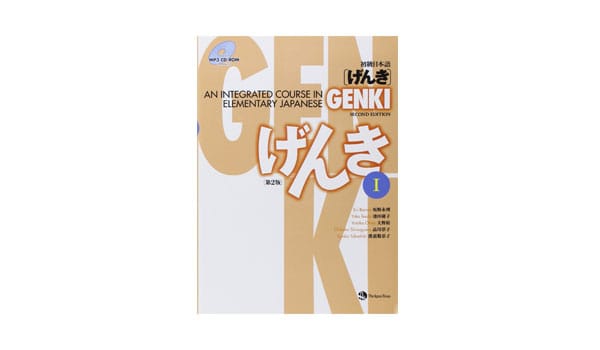
Genki
I don’t think there’s any resource you’ll see recommended to those looking to get started learning Japanese than the Genki textbook series. It can give you an exceptionally solid foundation covering listening, speaking, reading and writing. Included with the textbook are audio files. The workbook is also really helpful for getting you to put into use what you’ve learned throughout the chapters.

Pimsleur
Pimsleur is a bit different than most language courses. There’s very little emphasis on the written language and grammar is completely ignored. Instead, the lessons focus on the oral language. Throughout, you’ll listen, think, and speak in Japanese. They require a good amount of focus and participation on your behalf. The courses are a bit overpriced if you were to purchase them, but the subscription is much cheaper.
See our Super-Detailed Pimsleur Review

Lingodeer
Most people are probably familiar with Duolingo, but unfortunately, most would agree that their courses aren’t very good for Asian languages. Luckily, Lingodeer is a similar app that teaches Japanese, among other languages. I like how the audio for the lessons is recorded by native Japanese speakers and sounds great. Additionally, there are lots of different types of exercises for you to practice.
See our Super-Detailed Lingodeer Review
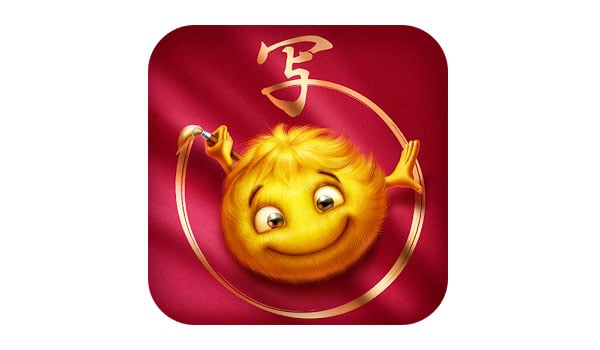
Skritter
Skritter is an app that makes it much easier to practice writing Japanese – both Kanji and Kana. You can use your finger to write characters directly onto your phone’s touchscreen. It also makes use of spaced repetition software (SRS) so you’re prompted to review the characters you find more challenging, while not wasting time on those you’ve already mastered.
See our Super-Detailed Skritter Review
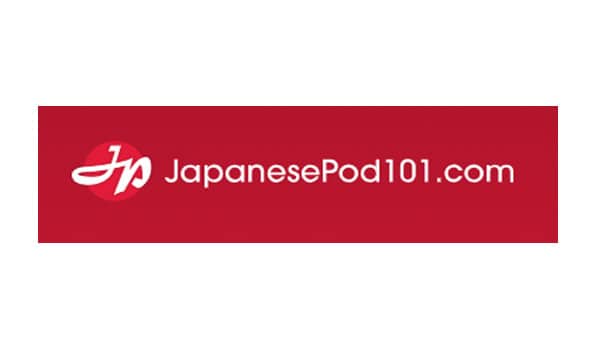
JapanesePod101
JapanesePod101 is an extensive resource with tons of podcast style lessons, starting from the absolute beginner and reaching the advanced level. There are three different plans available, with the Basic plan being very affordable and quite good value. The hosts often chat a lot in English at lower levels, but as you move up, Japanese is used much more.
See our Super-Detailed JapanesePod101 Review

Satori Reader
Satori Reader is a Japanese learning method that focuses mainly on Japanese reading skills with grammar and vocabulary being taught through weekly annotated articles and dialogues. It also has a vocabulary repetition app that contains the new vocabulary learned from the articles. A premium subscription is required to get access to all of the articles, but the basic free version allows for access to a limited number of articles which can be good if you aren’t sure if this is for you.
See our Super-Detailed Satori Reader Review
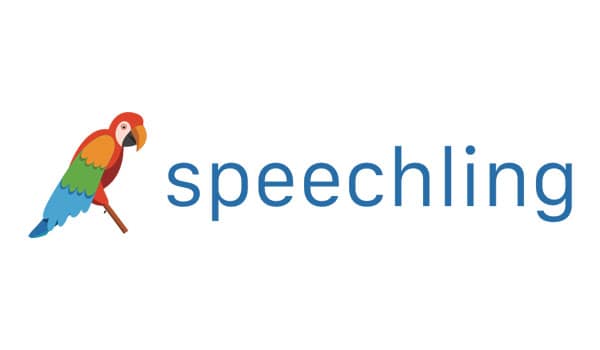
Speechling
One of the best ways to improve your spoken Japanese is by mimicking Japanese speakers. Speechling makes this (and many other things) easy to do. For free, you can listen to a recording of a word or sentence, then record yourself saying the same thing. If you’re willing to pay for a subscription, you can then submit those recordings to be graded and receive feedback on your pronunciation.
See our Super-Detailed Speechling Review

Memrise
Memrise is among the most popular apps, regardless of which language you’re learning. There are ten courses that have been added by Memrise, along with countless others that users have added. Memrise is best of learning words or phrases as it’s essentially a more fun version of a flashcard app. Because of this, it’s not very suitable for learning deeper parts of the Japanese language.
See our Super-Detailed Memrise Review

Clozemaster
Clozemaster is great for learning and practicing vocabulary within context. The design feels a bit like a 80s or 90s era video game. You’ll be given tons of sentences and will have to fill in the blank with the correct word – either by typing it in or choose among multiple choices. While there is a pro plan, most users will find the free version offers more than enough value.
See our Super-Detailed Clozemaster Review

italki
With over 250 Japanese teachers, many of which charge less than $10/hour, italki is easily my top choice for finding a tutor. The large number of teachers makes it easy to find someone that fits your schedule and learning style. In addition, you can find language exchange partners, get feedback on your writing via their notebooks section, and ask any questions about Japanese, for free.
See our Super-Detailed italki Review
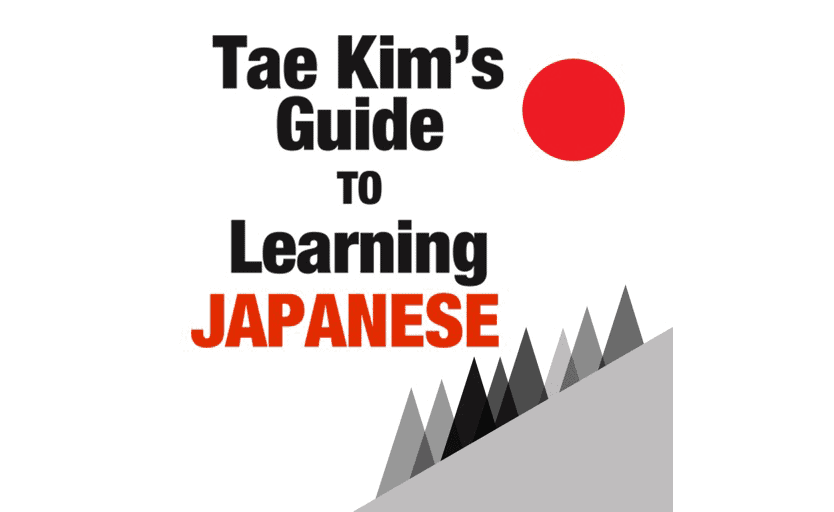
Tae Kim’s Guide
Tae Kim’s Guide to Learning Japanese is an all-inclusive guide covers a wide variety of subjects such as the three writing systems, verb tenses and clauses. It’s free on the actual website, but you can pay for either a paperback or Kindle version if you prefer those. There isn’t much in the way of audio content, but there are fortunately some YouTube videos that help the lessons out a bit.

Wanikani
Wanikani is a great Japanese resource that provides mnemonic devices with a spaced-repetition system to teach radicals, kanji and vocabulary. It’s best used in combination with other resources as it doesn’t provide everything you’ll need to learn Japanese. They also constantly add new material so they’ll always be more to learn, even if you finish all the kanji. Overall, it’s a really great resource for beginners as it provides you with a strong foundation for reading.
See our Super-Detailed Wanikani Review

Human Japanese
Human Japanese is a well-designed course that offers quality instruction at a pretty reasonable price. It builds on itself in a logical way which makes it easy to use and stick with. The course is designed like an interactive textbook with a lot of care put into each chapter. This sort of layout may not appeal to everyone, but it’s definitely worth a try for most. If you’re a beginning learning and you’re serious about learning Japanese then Human Japanese is a great option.
See our Super-Detailed Human Japanese Review

Takoboto
Takoboto isn’t a traditional Japanese-learning resource as much as it is a dictionary. If the idea of using a dictionary to learn Japanese sounds boring, don’t worry it provides much more than just definitions. Takoboto has over 170,000 entries with English translations, example sentences and even conjugated verbs. You’ll also find study lists and flashcards that have the ability to be exported to the Anki app. All in all it’s a lot more useful than just an ordinary dictionary.
All Japanese Reviews
- 17 Minute Languages Review: I Wouldn’t Recommend Using It
- Assimil Review — A Fresh Look at a Longstanding Resource
- Busuu Review: Some Courses Are Better Than Others
- Clozemaster Review: Limited Focus But Fun Way To Grow Vocab
- Cudoo Review — I Wouldn’t Even Use it if it Were Free
- Drops App Review – Decent As A Supplementary Resource
- Duolingo Review: Useful But Not Sufficient – 2 Language Learners Test It (With Video)
- Earworms Review – A Unique Idea But Lacks Substance
- Fluent Forever App Review – Lots Of Potential But Not There Yet
- FluentU Review — More Expensive than the Competition
- Glossika Review – Not Cheap But Useful
- HelloTalk Review – Make Friends & Practice Languages
- HiNative Review: Useful But Not Exceptional Q&A App
- Human Japanese Review: A Boutique App For Learning Japanese
- italki Review – The Good, The Bad, & The Just Alright
- JapanesePod101 Review – It Works Well As A Supplemental Resource
- Language101.com Course Review – The Worst I’ve Ever Tried!
- LanguagePod101 — All Languages, Pod101 and Class101
- Ling Review — Gamified Practice in Less Common Languages
- Lingodeer Review – A Better Alternative To Duolingo, Busuu, Rosetta Stone, etc.
- LingQ Review – Extensive Reading Made Easy
- LinguaLift Review – You’d Be Better Off Using A Textbook
- Live Lingua Review: My Experience With Their Lessons
- Living Language Online Course Review – Not Very Good
- Mango Languages Review – Pretty Good For Beginners
- Memrise Review – Useful But Don’t Overuse It
- Michel Thomas Method Review – Avoid At All Costs
- Mimic Method Review: Trying Out The Elemental Sounds Courses
- Mondly Review – Made Significant Improvements Made in 2022
- Pimsleur Japanese Review – We Like It Because It Makes Me Speak Japanese From Day One
- Pimsleur Review — Learn While You… Do Just About Anything
- Preply Review – Tutors Created Tailored Lesson Plans for You
- Rocket Japanese Review – Exceeded My Low Expectations
- Rosetta Stone Review — Updated and Improved…And Needs More Improvement
- Rype App Review: I Wouldn’t Recommend It To Anybody
- Satori Reader Review – Engaging Japanese Texts and Dialogues
- Skritter Review: Solid Chinese and Japanese Writing Practice
- Speaky Review: Better Than Other Language Exchange Apps?
- Speechling Review – I Didn’t Know I Was Saying That Wrong!
- StoryLeaning Spanish Uncovered In-depth Review: One-of-a-kind and Surprisingly Effective & Enjoyable
- Storylearning Japanese Uncovered Review
- Tandem Review: A Tinder-esque Language Exchange App?
- Transparent Language Review – Not Exciting, But Language Offering Is So Vast That You May Need It
- uTalk Review – For Beginners Who Want To Learn Key Words & Phrases
- Verbling Review: Online Classes With Helpful Revision Tools
- Wanikani Review – A Useful Supplementary Tool For Studying Japanese
- Word Dive Review: Falls Short Compared To Similar Apps
All Japanese Mini Reviews
- 50 Languages Mini-Review: Basically an online phrasebook
- AmazingTalker Mini Review: Not Our Top Pick for Web Classes
- Anki Mini-Review: The Go-To SRS Flashcard App
- Bab.la Mini-Review: Use WordReference or Linguee Instead
- Beelinguapp Mini-Review: Reading & Listening Practice
- Bilingual Oxford Dictionaries Mini Review: Handy Apps
- Bluebird Languages Mini-Review: Over 160 Languages Available
- BondLingo Mini-Review: Live Japanese Language School Classes
- Brainscape Mini-Review: Adaptive Flashcards
- BunPro Mini Review: Japanese Grammar Flashcards For N5–N1
- CaptionPop Mini-Review: Use The Free Version
- Casual Nihongo Mini-Review: Topics Mostly Focus on Dating
- Complete Language Lessons Mini Review: Almost Useless
- Conversations by StoryLearning Mini-Review: There are Cheaper Options
- Cooljugator Mini-Review: Conjugations For Uncommon Languages
- Coursera Mini Review: Great for Beginners, but Limited Options
- DeerPlus Mini Review: Fun Supplementary App
- Easy Languages Mini-Review: Interviews Around The Globe
- edX Mini-Review: Worth It If You Audit, Maybe Not If You Pay
- Eggbun Mini-Review: Excellent for Understanding Hangul
- Elon.io Mini Review: A Bit Messy
- Encore!!! Language Learning Mini-Review: Basically a Phrasebook
- Flowlingo Mini-Review: Has Potential, Still Developing
- Forvo Mini-Review: Audio Pronunciation of Millions of Words
- FSI Courses Mini-Review: Free, Comprehensive, but Also Outdated
- FunEasyLearn Mini-Review: Build Vocabulary The Fun Way
- Genki Mini Review: Beginner-Friendly Japanese Textbooks
- Go! Go! Nihon & Akamonkai Online Japanese Course Mini Review
- Hey! Lingo Mini-Review: Has Useful Phrases
- iLanguages Mini-Review: Almost Identical to Learn 101
- iLoveLanguages Mini-Review: Another Phrasebook SIte
- Imabi Mini Review: Thorough, Text-Based Lessons
- Instant Immersion Mini-Review: No Longer a Good Investment
- Internet Polyglot Mini-Review: Word Lists With Games
- iTranslate Mini-Review: 5 Apps To Support Communication
- Japanese (Renzo Inc.) Mini Review: Excellent Organized Word Lists
- Japanese For Busy People Mini Review: Not That Great
- Japanese From Zero! Mini Review: Slow, Easy, Fun Textbooks
- Japanese Level Up Mini-Review: A Step Up From Basic SRS
- Japanese With Noriko Mini-Review: BIte-Sized Listening Practice
- Jisho Mini-Review: Search From Romaji, Kanji, or English
- Kanji Study Mini-Review: Comprehensive Dictionary and Flashcards
- Kanshudo Mini-Review: A Must-Have, And It’s Free!
- L-Lingo Mini-Review: Textbook Content, Depends On Your Style
- Lang Workbooks Mini Review: Thorough Writing Practice
- LangCorrect: Unlimited, Free Writing Practice With Feedback
- Language Learning WIth Netflix Mini-Review: Easy to Use
- Learn Japanese: Bunpo Mini Review: One-Stop Grammar Practice
- Learn WIth Oliver Mini-Review: Simple With Lots of Content
- Learn101 Mini-Review: A Re-Formatted Version of iLanguages
- Lexilogos Mini-Review: A Resource Bank For Dictionaries and Books
- Lingo Mastery Short Stories Mini-Review: Lots of Unique Words
- LingoHut Mini-Review: Good Intentions, So-So Follow Through
- Lingua Boost Mini-Review: Use Pimsleur Instead
- Linguee Mini-Review: Best Dictionary for Formal Language
- Loecsen Mini-Review: Phrasebook App For Absolute Beginners
- LyricsTraining Mini-Review: Listening Practice Through Songs
- Manga-Sensei Mini-Review: Bite-Sized Podcasts and Lessons
- Marugoto Mini Review: Astonishlingly High-Quality and Free
- Master Any Language Mini-Review: No Words To Describe the Nope
- Miageru Mini Review: Useful for Drilling Beginner Japanese
- Minna no Nihongo Mini Review: Thorough Japanese Textbooks
- My Language Exchange Mini-Review: Millions of Active Users
- MyTest Migii Mini-Review: Thorough and organized JLPT Prep
- Native Camp Japanese Mini Review: Flexible Resource with Unlimited Japanese Learning Material
- NHK World Mini Review: A Quality Introduction to Japanese
- OPLingo Mini Review: Community Driven, Non-Profit
- Optilingo Mini-Review: Use if You Absolutely Love Slideshows
- Polly Lingual Mini-Review: Phrasebook With Simple Games
- Readlang Mini-Review: A Must-Have For Language Lovers
- Reverso Translation Mini-Review: Best for French learners
- Samidori Mini Review: Free Online Japanese Course
- Scripts Mini-Review: Flashy and Fast-Paced
- Shirabe Jisho Mini-Review: Great for Apple Users
- Simply Learn Mini-Review: Spaced Repetition Phrases For Travelers
- Small Talk in Japanese Mini-Review: Covers Many Different Topics
- Speekoo Mini-Review: Dip Your Toes in a Language and Culture
- Strokes International Mini Review: Pricy but Comprehensive
- Sublearning Mini-Review: There Are Better Uses For Your Time
- SuperMemo Mini-Review: Not to Be Confused With Super-Memo
- Tae Kim’s Guide to Learning Japanese Mini-Review: Very Thorough
- Takoboto Mini-Review: Dictionary App With Conjugations
- Tatoeba Mini-Review: A Community Writing Sentences in Context
- Teuida Mini Review: Fun and Efficient Way to Learn Korean or Japanese
- The Japanese Page Mini Review: Engaging and Unintimidating
- TODAI Mini-Review: Decent, but Not Perfect
- Verbix Mini-Review: Adequate for Less-Studied Languages
- Vocabulearn Mini Review: Unlikely to Teach You a Language
- Vocly Mini-Review: Expand Your Vocabulary in Less Common Languages
- Wakarukana Mini-Review: Japanese Media You Can Understand
- Wasabi Mini Review: Japanese Classes & Self-Study Lessons
- WordReference Mini-Review: Thorough and Professionally Translated
- Write Alphabet Mini-Review: Try Our Other Recommendations Instead
- Write It! Mini-Review: Simple and Straight-Forward
- Write Me Mini-Review: Learn Basic Scripts
- YesJapan Mini Review: Simple Explanations With Intuitive UI
- YouGlish Mini-Review: Thousands of Words in Context From YouTube




